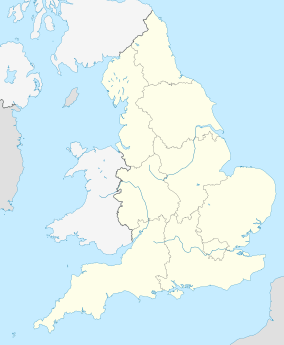Brighton and Lewes Downs Biosphere Reserve facts for kids
Quick facts for kids Brighton and Lewes Downs Biosphere Reserve |
|
|---|---|
| Location | Sussex, England |
| Nearest city | Brighton and Hove, Sussex, England |
| Area | 29,514 hectares (113.95 sq mi) |
| Established | 2014 |
| Governing body | Brighton & Hove City Council, Lewes District Council, Adur District Council, South Downs National Park Authority, Natural England, Sussex Inshore Fisheries & Conservation Authority, Marine Management Organisation |
The Brighton and Lewes Downs Biosphere Reserve is a special place in Sussex, on the southeast coast of England. It's near the city of Brighton and Hove. This area was made a UNESCO Biosphere Reserve in 2014.
A Biosphere Reserve is a place where people work together to protect nature. They also find ways for people to live and work sustainably. This means using resources wisely so they last for the future.
This reserve is part of the South Downs National Park. It's known for its chalk hills and cliffs. The area stretches between two rivers, the River Adur and the River Ouse. The coastline has amazing white chalk cliffs and lovely beaches. People love this area for its art, culture, and beautiful English countryside.
Contents
What is the Brighton Biosphere?
The Brighton and Lewes Downs Biosphere Reserve covers a large area. It is about 29,514 hectares, which is roughly 114 square miles. This space is divided into different zones.
There's a 'core area' where nature is most protected. Then there's a 'buffer zone' around it. This zone helps protect the core. Finally, there's a 'transition area'. This is where people live and work, and where sustainable living is encouraged.
Amazing Nature and Wildlife
The Brighton and Lewes Downs Biosphere is home to many different habitats. These include chalk cliffs by the sea and underwater chalk reefs. You can also find freshwater wetlands and shingle beaches. There are also deciduous woodlands, river estuaries, and chalk grasslands.
Diverse Environments
The reserve has three main types of environments. These are rural, coastal and marine, and urban areas. They all work together.
The rural areas have chalk grassland. This is one of the richest wildlife habitats in the UK. It has many different plant species. You can find up to 40 to 50 types of plants in just one square meter! This grassland is also important for insects. Many butterflies, like the Adonis blue butterfly, live here. You might also spot the Wart-biter insect.
The coastal and marine areas are along the English Channel. The cliffs here are perfect for birds like the Northern fulmar to build nests. Underwater, there are unique chalk reefs. Over 300 different marine species have been found here.
Special Species
This area is home to many rare and important species. About 211 species here are on international conservation lists. One example is the European eel. There are also over 1,000 local rare species. These include the hedgehog and the yellowhammer bird.
You can also find special local types of plants. These include unique elm trees and wild apple trees. The area is also known for its special farm animals. These include the Southdown sheep and the rare Sussex cattle.
People and Communities
Around 371,500 people live in the biosphere area. Most of them live in the towns and cities. These include Brighton and Hove, Lewes, Newhaven, Peacehaven, Shoreham, and Southwick.
The rural areas of the South Downs National Park are home to about 13,500 people. The most protected 'core areas' do not have any people living in them.
A Popular Place to Visit
The Brighton area is very popular with tourists. It's only about 55 miles from London. Around 12 million visitors come here every year! They love the beautiful nature and the lively culture. The area also has a rich history. You can find old archaeological sites from the Stone Age. There are also famous buildings from more recent times.
Brighton and Hove used to be a seaside resort. Now, it's a city focused on services like tourism and business. People here also work in farming and fishing. Local fishermen catch seafood. Most of it goes to local restaurants and markets. Some is also sent to Europe.


